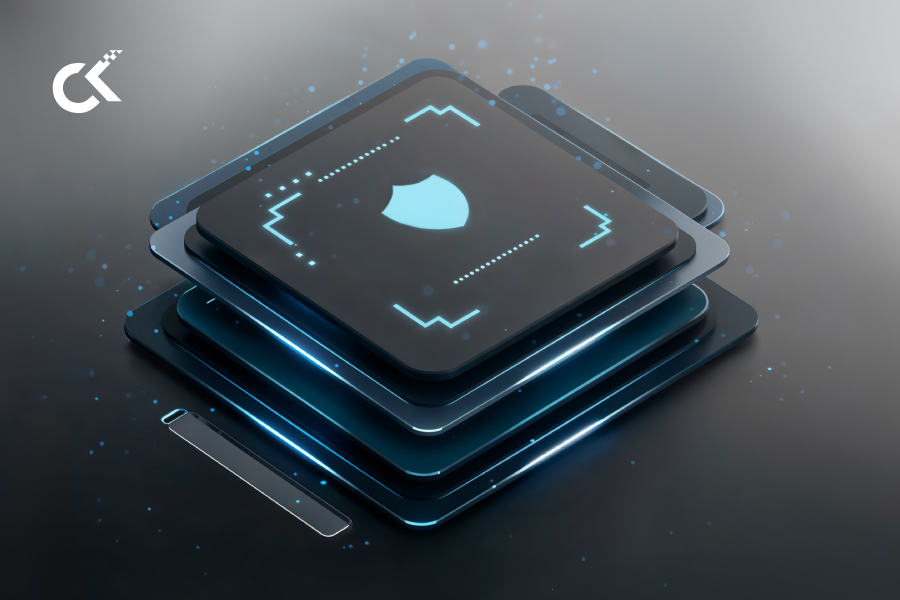Chief Information Security Officers (CISOs) today are no longer in charge of just guarding the perimeter or quietly patching vulnerabilities behind the scenes. You are in the boardroom shaping strategy and expected to help the business move faster, innovate boldly, and still somehow keep everything secure. It’s a tough balancing act, and a bit of a paradox.
On one hand, there is a need to accelerate digital transformation, experiment with new technologies, and take more calculated risks. On the other, airtight security is crucial in a world where threats are more complex, more frequent, and more unpredictable than ever.
A recent Gartner report reveals this tension clearly: 58% of boards want their organizations to take on more technology risk, while 81% still view cybersecurity as a critical business risk. So how can CISOs enable speed and scale without compromising security?
So how do you move forward without falling behind, or leaving your organization exposed?
To answer this, Gartner outlines three strategic imperatives to guide this balance – performance, resilience, and agility. These pillars are not just best practices; they are foundational for security leaders who must align security with business outcomes in an age of constant transformation.
3 cybersecurity best practices & pillars: Move beyond traditional cyber defence
In the past, cybersecurity followed a risk-averse strategy that included asset lockdowns, access controls, and disruption avoidance. But as the digital revolution picks up speed, this stance is no longer sustainable. Today, security needs to change in order to support business.
CISOs are required to support cross-border operations, cloud migration, AI integration, and digital innovation in this evolving role – all while managing cyber risks with greater precision and adaptability. To meet these expectations, cybersecurity programs must be optimized across three dimensions:
1. Optimize for performance
Cybersecurity focus: Do more with less, but smartly
Cybersecurity teams are often tasked with covering a broad and growing threat landscape, but with static or shrinking budgets. The answer lies not in doing more, but in doing better.
Gartner’s first imperative is about performance optimization, in the sense of work smarter.
Optimizing performance means:
- Measuring and improving the effectiveness of security controls, ensuring they actually mitigate risk rather than just ticking boxes.
- Eliminating redundant or underperforming tools that add complexity without improving outcomes.
- Redirecting time, talent, and resources away from low-value activities and toward initiatives that have real business impact.
- Challenging outdated processes and assumptions, and replacing them with smarter, more efficient workflows.
In this context, performance is no longer just a technical metric, but a reflection of how well security supports business priorities. High-performing security programs are those that drive measurable outcomes, enhance user trust, and improve operational agility.
2. Optimize for resilience
Cybersecurity focus: Recovery over perfection
Perfection is no longer a realistic goal with the threats we face today.
With cyberattacks growing in sophistication and frequency, the mindset has shifted – “assume breach” is now the default posture. Rather than trying to protect every asset equally, CISOs must focus on building resilience: the organization’s ability to resist, absorb, recover from, and adapt to disruption.
Key actions include:
- Prioritizing the most critical assets and processes, recognizing that not everything can, or should be, protected to the same degree.
- Designing systems and protocols with failure in mind, ensuring that when something goes wrong, damage is contained and recovery is swift.
- Equipping teams through hiring and training to respond effectively to incidents and adapt quickly to evolving threats.
Resilience is not just about preventing incidents, it’s about minimizing their impact and accelerating recovery. This requires a fundamental shift in how security programs are designed and operated.
The goal isn’t zero incidents, it’s rapid recovery and continuous improvement. Resilient organizations are able to bounce back stronger from setbacks, learning from each disruption to fortify their defenses over time.
3. Optimize for agility
Cybersecurity focus: Adaptive, customer-oriented security
The final imperative Gartner highlights is agility, a trait that has become essential as business priorities continue to shift at an unprecedented pace. In this dynamic environment, security programs can no longer be rigid or reactive. They need to move in sync with the business, adapting quickly to new demands, technologies, and risks.
Agility in cybersecurity means embedding security into the fabric of the day-to-day operations, through DevOps pipelines, product roadmaps, and governance models. It’s about creating a living, evolving program that can adjust in real time, rather than following static frameworks that quickly become outdated.
Agile cybersecurity programs are designed to evolve. They prioritize:
- Rapid reprioritization of initiatives, ensuring that security efforts remain aligned with what the business needs right now.
- Tight integration with product and business teams, making security a shared responsibility rather than an isolated function.
- Ongoing feedback loops, where lessons from past initiatives inform smarter, faster responses in the future.
- Empowered, collaborative security teams that can make decisions and act without bureaucratic delays.
What the cybersecurity imperatives mean for CISOs
Together, these imperatives reshape the CISO role from a gatekeeper to that of a strategist. To deliver on this mandate, CISOs must:
- – Redefine success metrics like business enablement over control coverage
- – Design programs around real-world adaptability, not theoretical models
- – Build cross-functional relationships with IT, product, and executive teams
One thing is clear: cybersecurity is no longer about saying no – it’s about empowering the organization to say yes, securely, strategically, and sustainably. The organizations that get this right will not only defend against cyber risk, they will gain a competitive edge through secure innovation.
At Cloud Kinetics, we support CISOs on this transformation journey by helping them build cloud-native, resilient, and agile security architectures. From modernizing multi-cloud security postures to embedding resilience in distributed systems, our cloud and security experts bring the right tools, frameworks, and advisory support to turn Gartner’s imperatives into actionable strategies.
Whether you’re looking to optimize performance, reduce response time, or scale secure innovation, we offer a tailored approach that meets your enterprise where it is, and helps take it where it needs to go.




